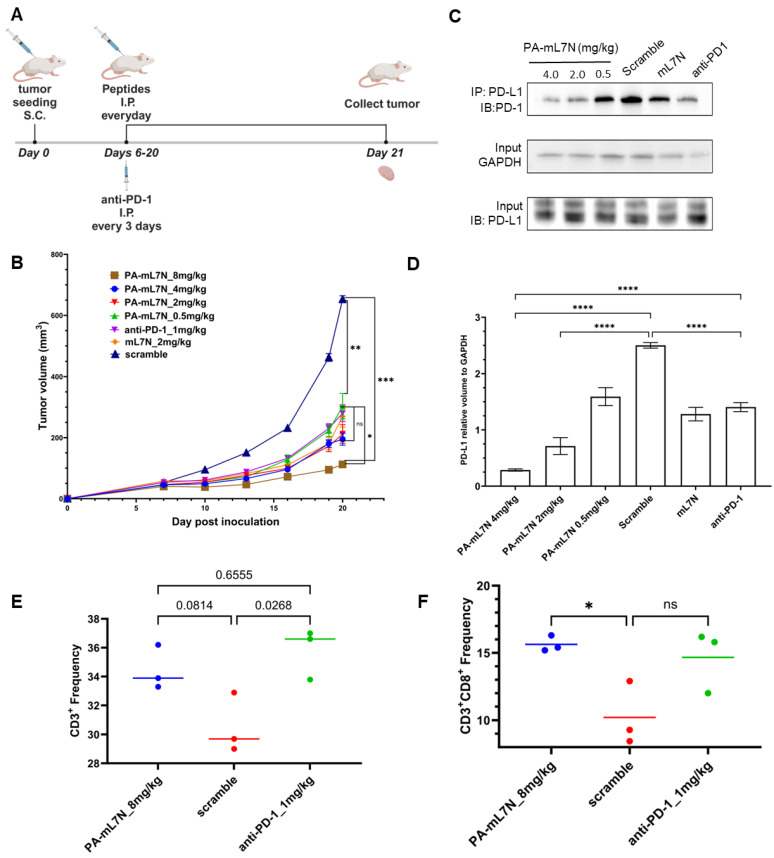Figure 6.
Peptide PA-mL7N effectively slowed down tumour growth in mice. (A) PA-mL7N, administered at 0.5–8 mgs/kg, was evaluated on 4T1-bearing BALB/c mice in comparison to an anti-PD-1 antibody (1 mg/kg, i.p). (B) Tumor growth curves for mice treated with the indicated peptides or αPD-1. (C) Western blot on tumours harvested on day 21 to show reduced binding of PD-1 to PD-L1 in tumors treated with increasing concentrations of the PA-mL7N peptide. (D) Quantification of the Western blot data (n = 3) in (C). (E,F) Flow cytometry data showing frequency of recruitment of total T cells (CD45+CD3+, (E)) or CD8+ T cells (CD45+CD3+CD8+, (F)) to tumours treated with PA-mL7N, the scrambled control, or αPD-1. *, p < 0.05; **, p < 0.01; ***, p < 0.0001; ****, p < 0.00001; one-way ANOVA.

